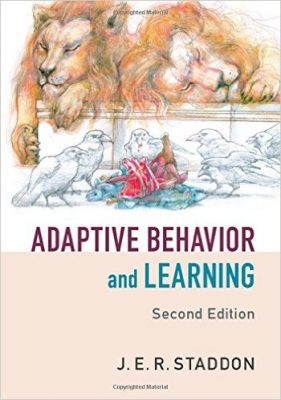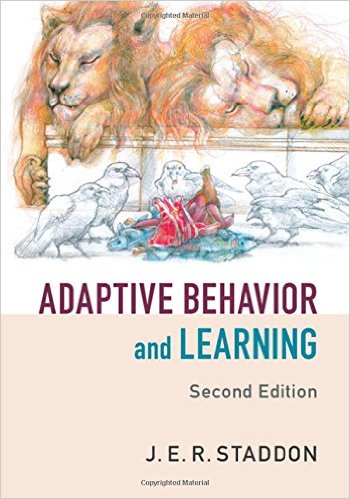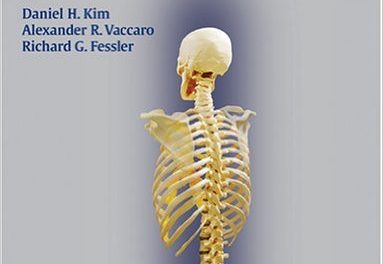 Author: J.E.R. Staddon
Author: J.E.R. Staddon
Publisher: Cambridge University Press – 599 pages
Book Review by: Sonu Chandiram
Many of the terms found in the titles of this book’s chapters are probably familiar to those who took an introductory psychology course in college: behavior modification, classical conditioning, cognition, learning, operant behavior, reward and punishment, stimulus and response, and others.
Who is J.E. R Staddon and what are his contributions to the world of psychology? If you are not a psychologist or studying to be one, you probably are curious to know something about him. We checked out a Wikipedia article and found out that he is quite an outspoken critic of the well-known behaviorist B.F. Skinner whose experiments you may have learned about in Psych 101.
Here is a portion of what we’ve read about him in a Wikipedia article:
“John Eric Rayner Staddon is a British-born American psychobiologist known for experimental and theoretical research on interval timing, Skinnerian “superstition,” and behavioral economics (optimality) in rats, pigeons, and fish—and people. He has been a critic of Skinnerian behaviorism and proposed a theoretically based “New Behaviorism.” which shows that the state of the organism must be taken into account as well as the stimuli it experiences and the responses it makes. State in this case is neither physiological nor mental, but a summary of the organism’s equivalent histories, a scheme based on the logic of historical systems developed by automata theorists.”
This book – Adaptive Behavior and Learning – is described briefly in that article as “a theoretical synthesis of research on research on instinctive and learned behavior in animals. Among other topics, the book presents a new synthesis of research on R. J. Herrnstein’s matching law and J. A. Nevin’s concept of behavioral momentum.”
“A long chapter discusses the success and failures of recent work on comparative cognition – the similarities and differences between the intelligence of animals and humans. Other topics include comparisons between human and animal choice behavior (prospect theory) and the Darwinian selection/variation approach, feeding regulation and theoretical analysis of well-known data on reinforcement schedules.”
This book is about the topics we list below, which are the titles of its 21 chapters:
- The evolution, development, and modification of behavior
- Variation and selection: kineses
- Reflexes
- Direct orientation and feedback
- Operant behavior
- Reward and punishment
- Feeding regulation: a model motivation system
- The optimal allocation of behavior
- Choice: dynamics and decision rules
- Foraging and behavior ecology
- Stimulus control and cognition
- Stimulus control and performance
- Molar laws
- Time and memory, I
- Time and memory, II
- Template learning
- Learning, I
- Models of classical conditioning
- Learning, II
- Learning, III: procedures
- Comparative cognition
This is a large book of almost 600 pages, but the some of the important basic points I found about the author’s stance on important issues in behavioral psychology are:
- This book is behavioristic in tone
- An animal is a historical system: what it does or can do now depends on what it did and what happened to it in the past; the animal we study today is not the same animal we studied yesterday
- This book is not “cognitive” in the conventional sense. The author does not believe in “Pavlovian and operant protocols.” The author doubts that advance prescriptions about what theory must be are very helpful
- Learning is an adaptive specialization rather than a single general-purpose process
- As for theory, the author’s bias is for simplicity. He writes: “science is about understanding, which means explaining much with little”
This is not just a new and unusual book, it is a unique and one-of-a-kind work. It turns old ideas on their head, stimulating thinking, striving for broader and deeper understanding about how animals and humans behave and act in many aspects of their life. I will go ahead and be trite by saying that it is “a breath of fresh air” and a must-read work for those interested in psychology.
Author:
J.E.R. Staddon is James B. Duke Professor of Psychology and Professor of Biology and Neurobiology Emeritus at Duke University. He has written and lectured on public policy issues such as education, evolution, traffic control, and the effects of socio-biological aspects of the financial system, and is the author of over 200 research papers and five books, including The New Behaviorism (2014), Unlucky Strike (2013), The Magic Hand of the Markets (2012), and Adaptive Dynamics: The Theoretical Analysis of Behavior (2001).







